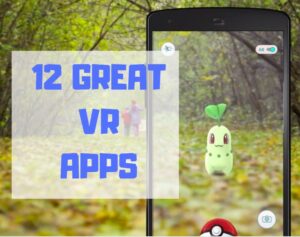 The potential impact of Virtual Reality (VR) in the classroom can’t be overstated. It has become the most exciting education device in a decade, enticing students to become engaged in pretty much any topic that includes a VR overlay. As a learning tool, it’s affordable, inclusive, and worth the moderate learning curve required to get it up and running.
The potential impact of Virtual Reality (VR) in the classroom can’t be overstated. It has become the most exciting education device in a decade, enticing students to become engaged in pretty much any topic that includes a VR overlay. As a learning tool, it’s affordable, inclusive, and worth the moderate learning curve required to get it up and running.
Let me step back a moment and explain what VR is. HowStuffWorks defines it this way:
using computer technology to create a simulated, three-dimensional world that a user can manipulate and explore while feeling as if he were in that world.
Marxent explains it simply as:
the use of computer technology to create a simulated environment. Virtual Reality’s most immediately-recognizable component is the head-mounted display (HMD).
If you (desperately) want to unpack this revolutionary tool in your classroom, there are lots of online resources — some free, some with a fee — available to address a wide variety of education needs. Here are my favorites:
900 VR Expeditions
If you use the Expeditions app (see below), here’s a curated spreadsheet of 900 free expeditions available to you and your classes. It is crowd-sourced and sorted by tag, name, Panorama title, location, brief description, link, with a cell where teachers can note any additional required materials.
On a separate tab of the spreadsheet is a similar curated list of augmented reality expeditions, for those who have that technology available.
Class VR
Class VR is an affordable standalone Virtual Reality headset system complete with a unique student-friendly interface, comprehensive gesture controls, embedded educational resources, and simple-to-use teacher controls. It’s appropriate for all age groups from preschool to High School and beyond. Use is simple: Teachers plan the VR lesson by searching over 500 resources by subject, topic, or keyword. Lessons are delivered via headset including points of interest that dynamically attract student attention. Students move at their own pace, navigating the lesson with simple hand gestures.
CoSpaces Edu
Using the fee-based CoSpaces app, teachers create immersive, engaging VR (and AR) explorations of any content (using computer or tablet) which is then available to students. Simply drag-and-drop 360-degree images, sounds, objects, and characters onto the background. Animate with code (if you’re a more advanced user) and then set students loose. Topics might include languages, literature, social science, STEM, coding, makerspaces, and arts. Teachers can easily manage classes online from their dashboard, creating and share assignments and observing student work.
InMind VR
InMind 2 is a scientific VR Game that gamifies the exploration of thinking, molecules, chemistry, and human emotion. Game players must make choices as they play and the progress of the story and the results will vary depending upon their decisions.
NearPod VR
NearPod has become the go-to resource for teachers who look for customizable lesson plans. Now, using an app teachers and students are already familiar with, NearPod VR allows students to join virtual tours regardless of the device used in their schools — iPads, Chromebooks, Mac, or PCs. VR headsets are not required but can make the experience more immersive. VR lessons can be selected by grade or topic and include Mindfulness and Meditation, artistic expression, and a wide variety of college tours for high schoolers.
Timelooper.
Timelooper is the leader in recreating and delivering famous moments in history from around the world. They are offered in both VR and AR technologies using cutting edge production technologies that enable the most immersive experience possible.
Titans of Space
The Titans of Space app is a virtual tour of an authentic miniature Solar System with the option to go beyond. Students can stay at each location as long as they’d like — there’s lots to do at each including up to 60 minutes of optional English voiceovers and subtitles, visuals, over forty celestial bodies, and an engaging soundtrack. The app is delivered via Oculus Go, Rift, Vive, Monitor, Cardboard, and Samsung Gear VR (depending upon which version of the app you select). It is available in English, Simplified Chinese, Spanish, German, French, Portuguese, Russian, and Japanese,
The app is free to get started but includes in-app purchases to enrich the experience.
***
If you’re teaching from textbooks and your students yawn too much (or don’t study for tests), try VR. You both will love the immediate engagement and the passion for learning that comes hand-in-hand with virtual reality experiences.
More on VR
Virtual Reality in the Classroom: It’s Easy to Get Started




































